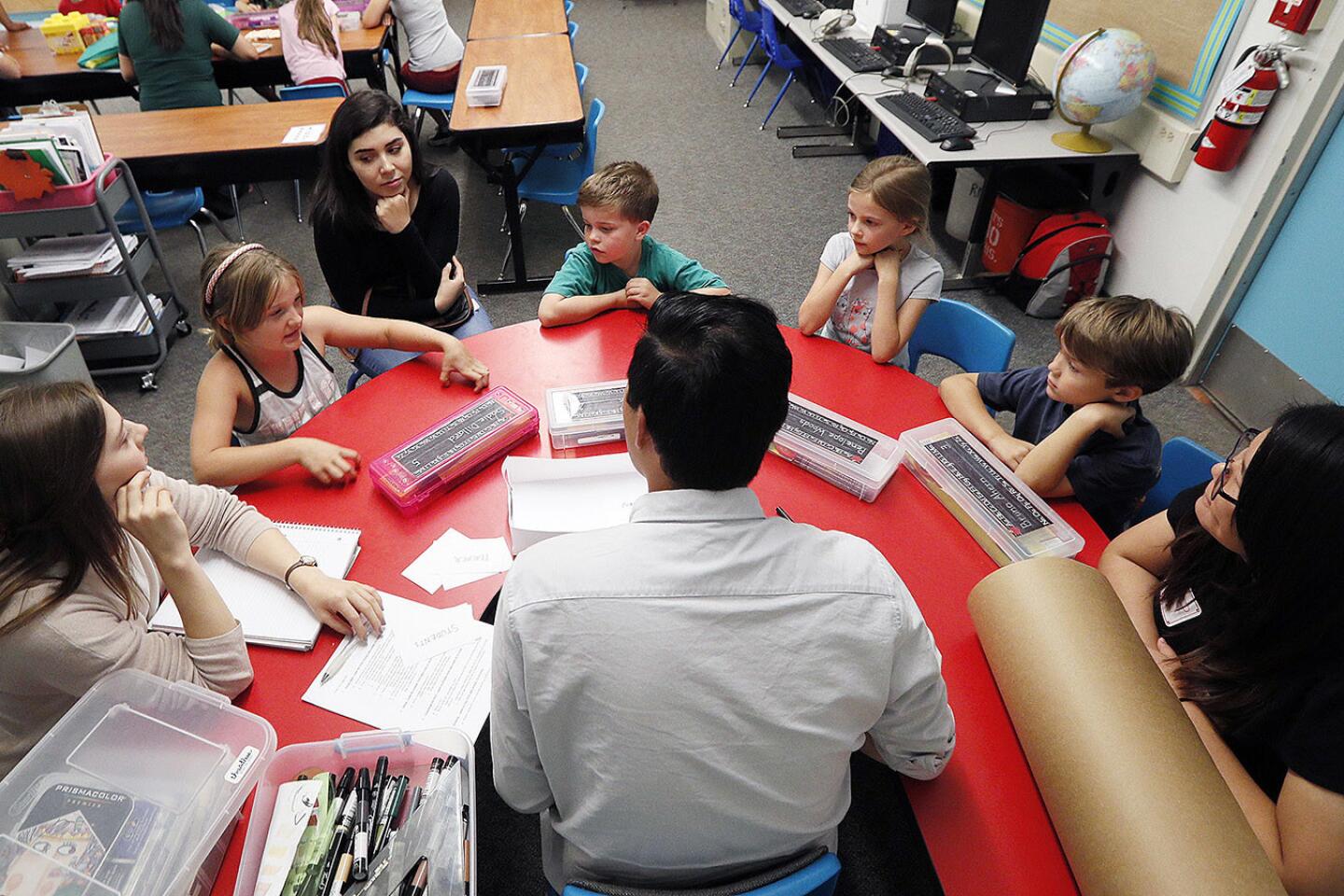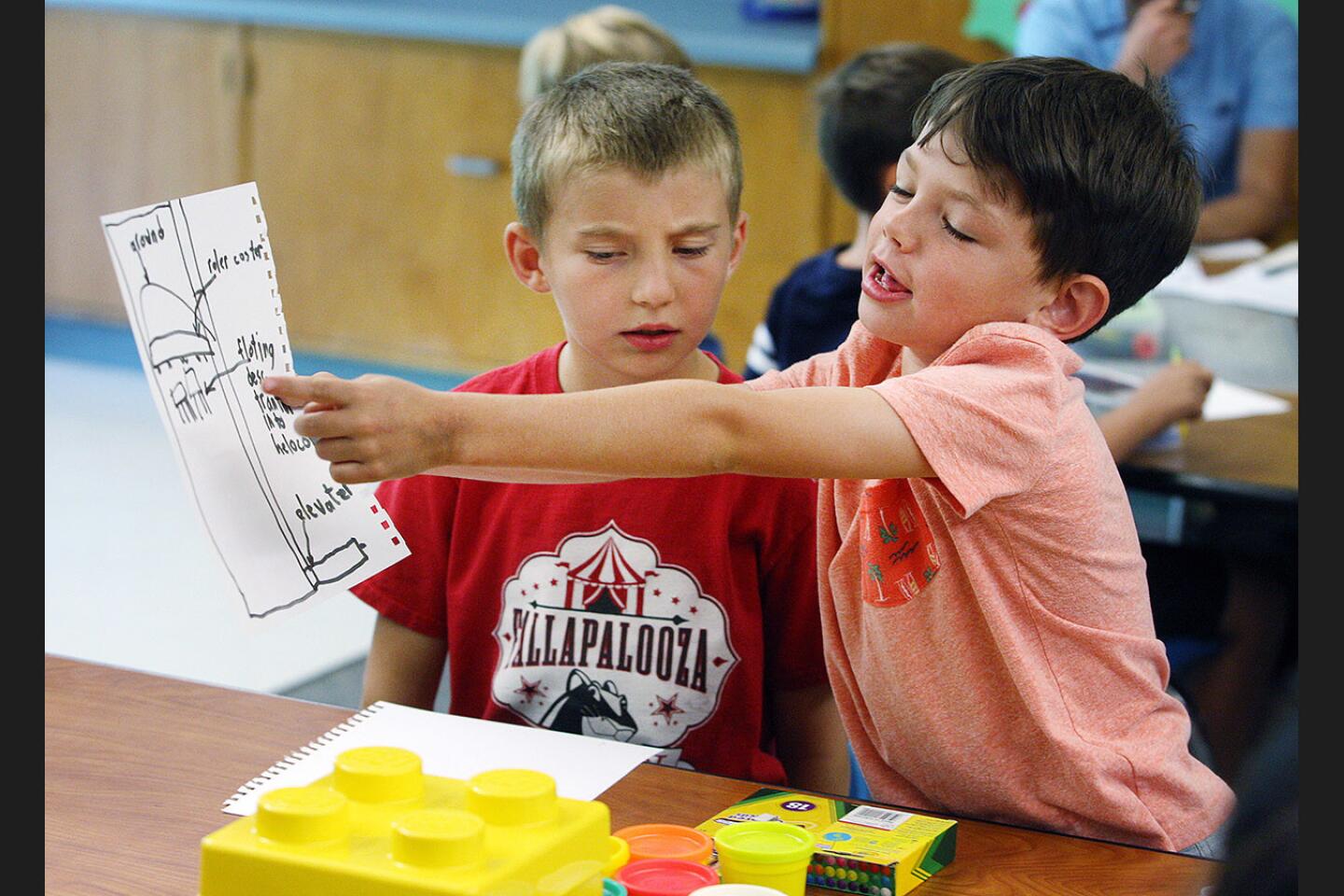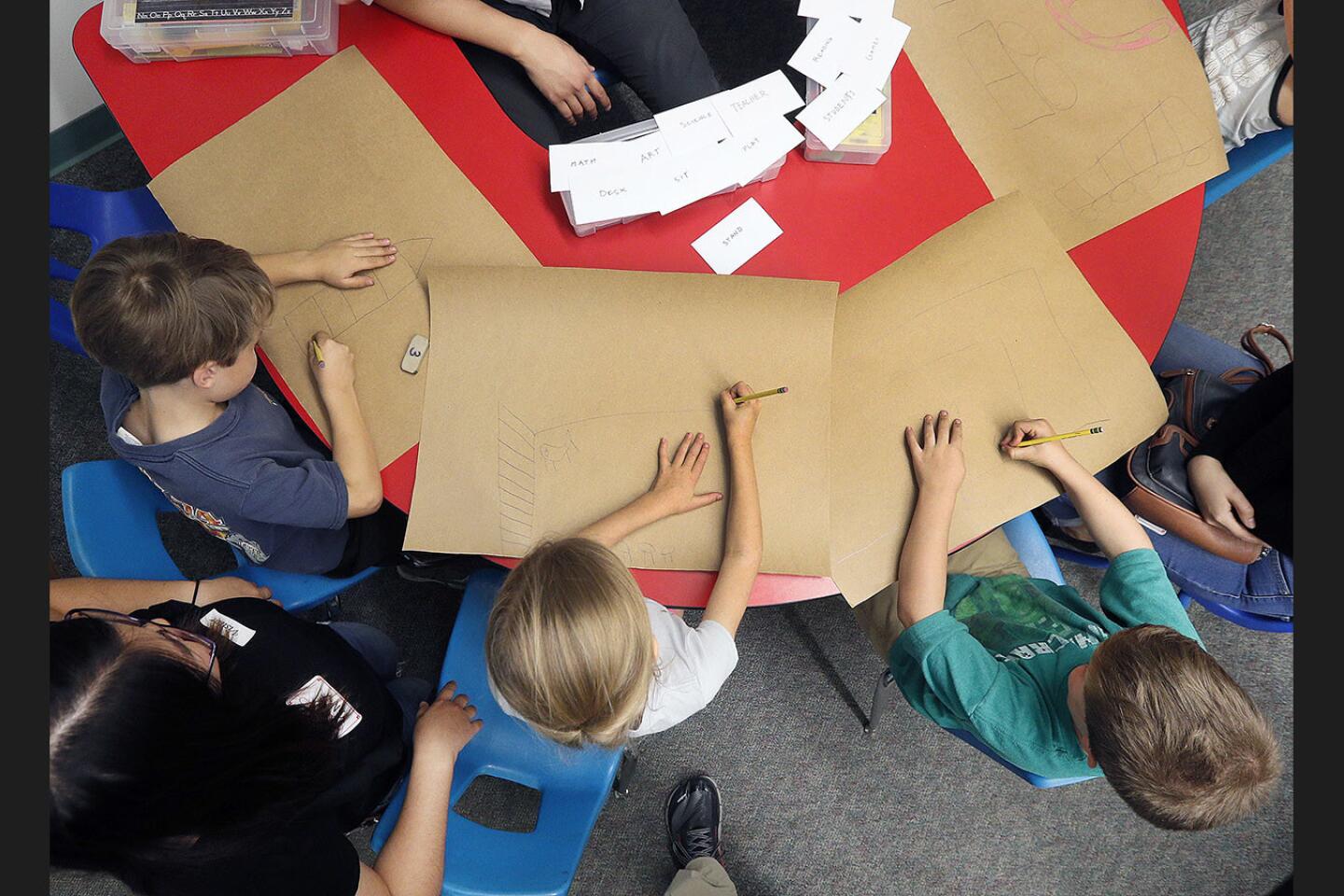Palm Crest second-graders work with architecture students to imagine ‘classroom of the future’
As La Cañada Unified School District considers how to bring campuses into the 21st century, a class of Palm Crest Elementary second-graders met Friday with architects-in-training from Cal Poly Pomona to imagine the classroom of the future.
Students in Meredith Beyer’s class welcomed Palm Crest dad, architect and visiting professor Kevin O’Brien for an in-class project designed to inspire advanced college students, currently learning about education design, to broaden their sense of what’s possible.
“The rationale is that 6- and 7-year-olds have fewer preconceptions and incredible imaginations and can help inspire my students to think outside the box, literally,” O’Brien said.
And, boy, did they ever. Suggestions included an underground classroom for tornadoes, a roller coaster in a cloud, ice cream pens, robot teaching assistants and a room shaped like Pokémon character Pikachu, with staircase legs and a slide coming out of its mouth.
“I know what I want in my classroom — a Calculator X-1000, ” said Theodor Faraon. “It’s a calculator that never gets tired and never makes a mistake.”
Pender Petrie used Play-Doh and toothpicks to build a model of a couch that could surf. Other ideas on his list included a space elevator, robotic flowers and a classroom on the moon.
Palm Crest Principal Karen Hurley said the lesson is perfectly timed, as LCUSD voters are considering a $149-million bond to modernize campuses. Putting 7-year-old brains to the task, she added, should net some interesting results.
“They’re very creative,” Hurley said of the kids’ developmental stage. “They like to talk and they love to share the ideas they have. They’ll come up with ideas maybe grown-ups would not have come up with.”
At a picnic table outside, Alexa Gordon Mellema, using a crayon, drew rolling chairs on butcher paper. Another idea, gently coaxed out of the 7-year-old by fifth-year Cal Poly Pomona student Jocelyn Lopez, was an anti-gravity machine.
“If [students] thought it was more fun to rest on the air while they worked, they could take a clipboard,” Alexa explained of her invention. “Of course, it would be very hard to do.”
O’Brien’s students will come back, at a date to be determined, to share renderings and models of actual classrooms inspired by the student’s ideas. While there may not be any roller coasters or giant Pikachu buildings, the spirit of the suggestions will be apparent, the professor assures.
Twitter: @SaraCardine










